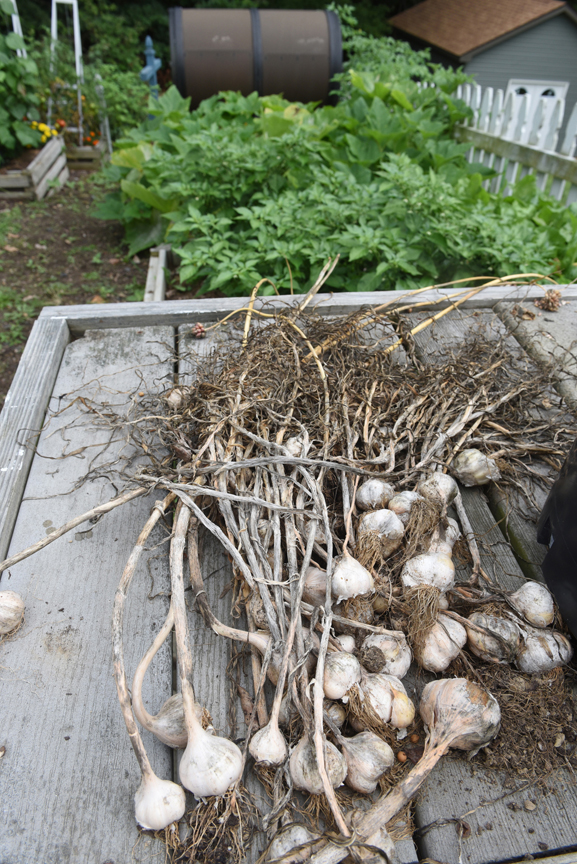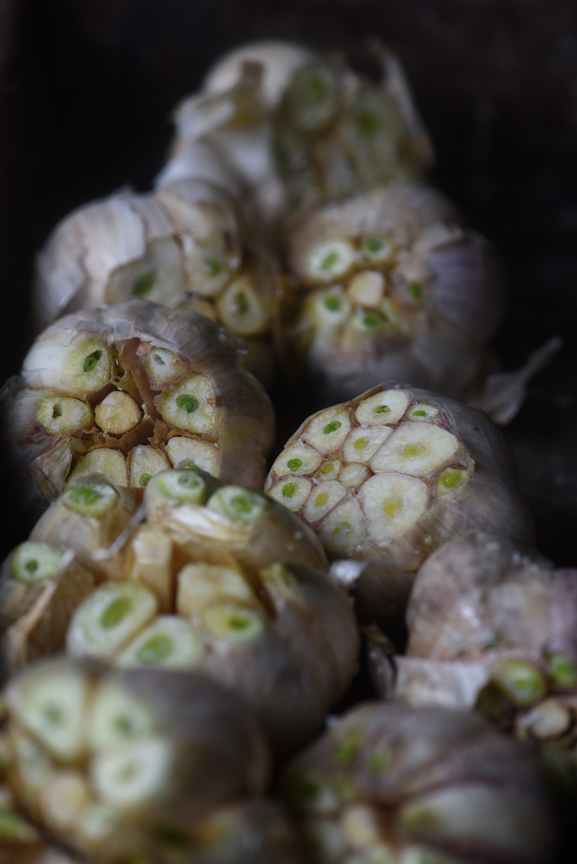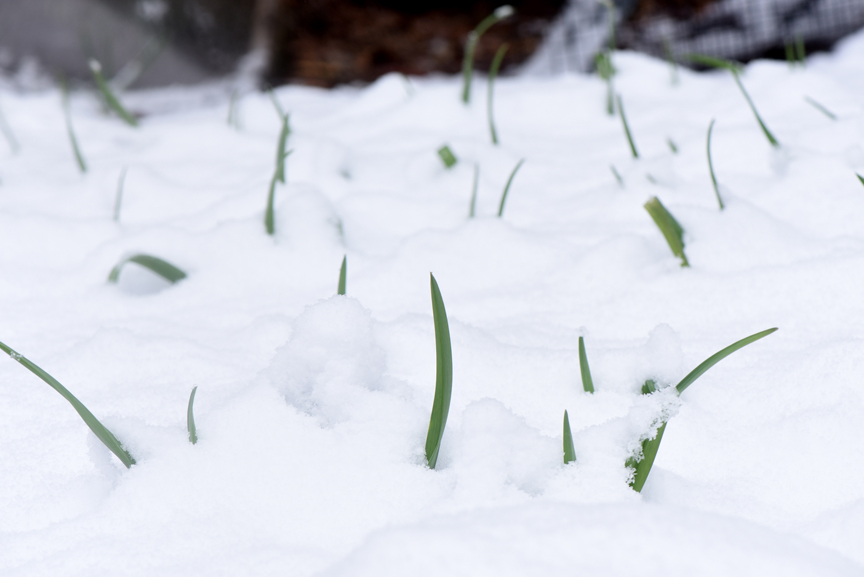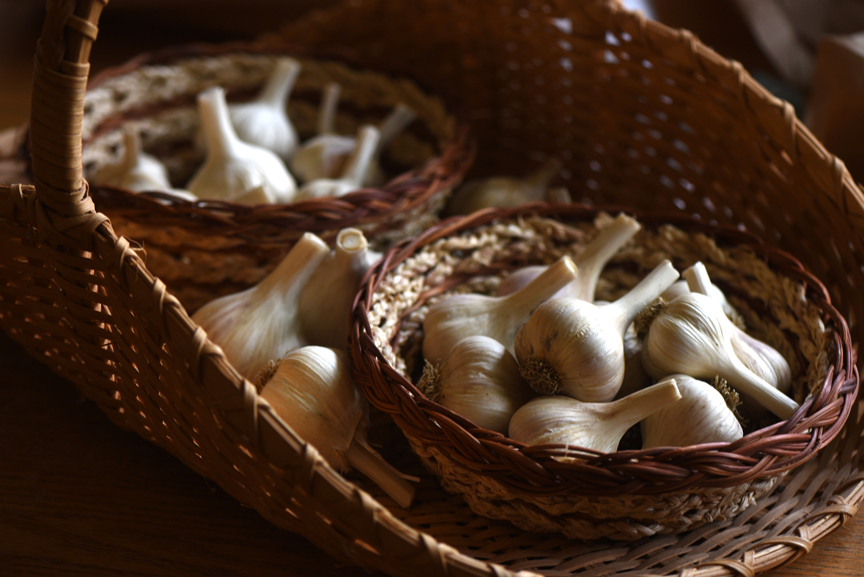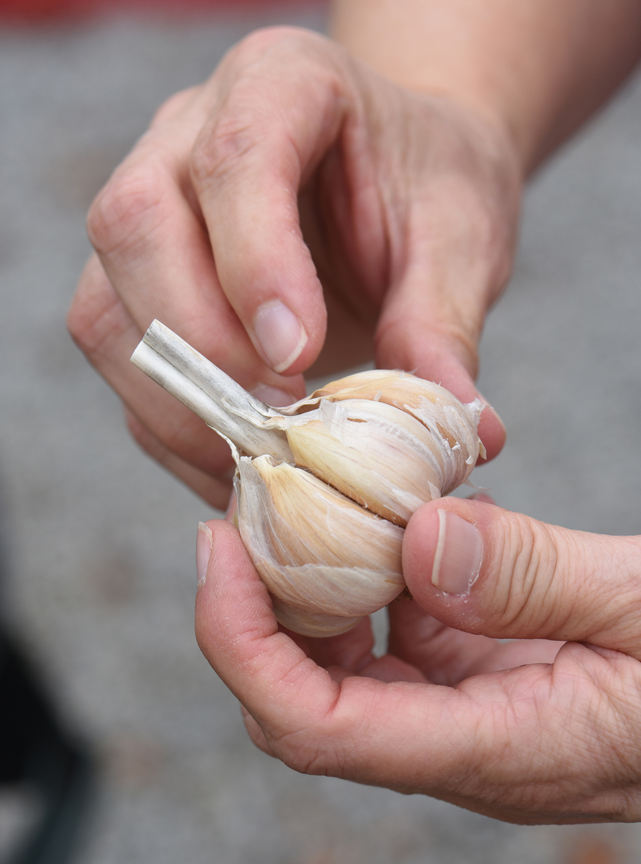How to grow garlic bulbs for 5 different harvests
Posted on: October 17, 2019 | Written By: Doug Oster |
There are good and bad things about being obsessed with garlic. On the bright side, it’s tasty, really good for you, and when cooked, fills the house with the aroma of love. (It repels vampires too, right?)
On the downside, after eating too much, that “lovely” fragrance permeates from pores, often offending people who come too close. Here are just some of the reactions I’ve experienced over the last few decades.
“You smell like an Italian sub sandwich.” Jessica Walliser while working together in a small radio production studio.
“What were you feeding him? He’s been sleeping on the couch for three days.” My sister-in-law after I served my brother ultimate garlic chicken.
“What’s that smell?” Countless co-workers, friends and fellow gardeners.
I felt sorry though for the poor women who sat next to me a couple of weeks ago after making an hour-long drive without air conditioning on a 90-degree day. The night before I roasted garlic, which sweetens the flavor and I tend to overdo it a bit. I think I ate three or four heads. That’s right … heads, not cloves.
Garlic lovers like me don’t mind though. It’s the price we pay for enjoying our favorite ingredient.
Homegrown garlic
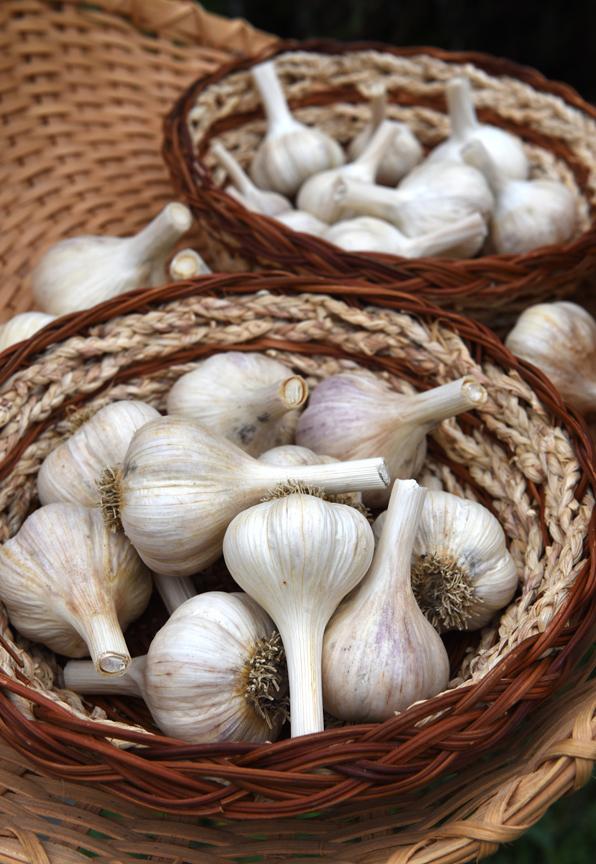
Garlic heads are split up into cloves and then planted. It’s important to start with the right type.
Nothing in the world though compares to homegrown garlic. I guess it’s just like anything else coming from the garden. It’s simple to grow, and gardeners who plant garlic can get five unique harvests.
It’s critical to start with garlic sold from a nursery or local source. That assures it’s hardy and not sprayed with something to retard sprouting, which can happen with grocery store heads.
Big heads like ‘Music’ and ‘German White’ are usually the easiest to find. If there are any other varieties available at garden centers, get a head of that, too. Once I was shipped 10 different varieties by a friend who runs a garlic farm. I planted all of the largest cloves, but labeled one small clove of each. When planting was done, I tasted each one raw, writing down the subtle nuances each possessed. Some were mild with a hot finish. ‘Georgian Fire’ burns the throat — in a good way. Just like different tomatoes, these cloves all offered something different.
How to plant garlic
Planting is easy, and can be done now through most of November as long as the ground doesn’t freeze solid.
Split the heads up into cloves, saving the smallest for the kitchen. Plant them three inches deep and six inches apart in good soil amended with compost. Bulbtone from Espoma is a great fertilizer for the cloves, too.
Cover the bed with a thick layer of straw, which acts like a blanket and keeps the soil evenly moist.
Sometimes the garlic will sprout, but don’t worry about it. Once winter arrives in force, the greens will recede.
Garlic harvest
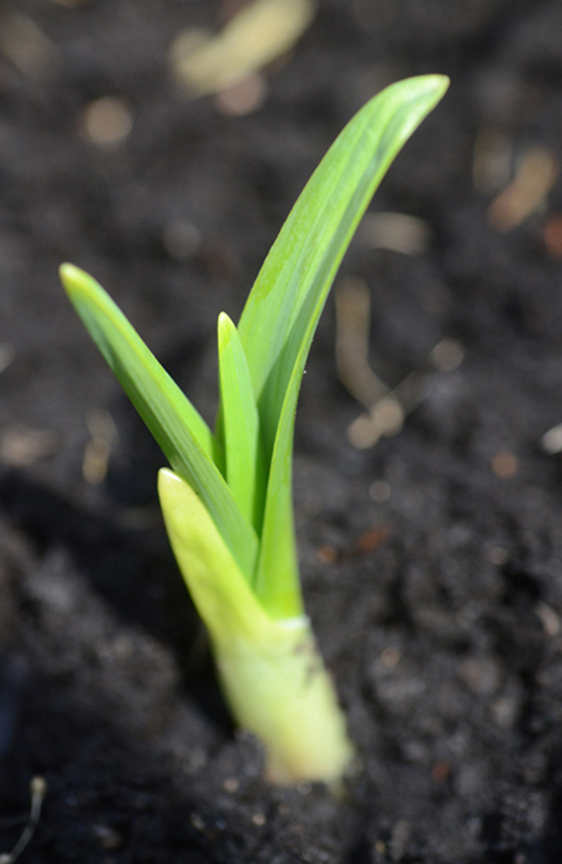
Garlic greens make a wonderful spring treat. They can be harvested sparingly as the foliage sends energy to the bulbs beneath.
The next spring is when the harvesting begins. You can get five harvests: greens, fresh scapes, swollen scapes, early bulbs and bulbs in July.
Greens will emerge at the same time crocus bulbs start blooming. The fat, center green is a wonderful treat. Since the foliage feeds the bulb, harvest sparingly.
Hardneck varieties will send up a seed head called a scape at the start of summer. This needs to be removed so the plant focuses its energy on making big bulbs. The scapes are a garlic lover’s treat in the kitchen. They have the garlicky flavor, but not the bite of the bulb. I make them into pesto or grill them after coating them with olive oil and a pinch of sea salt.
Leave some of the scapes in the garden. Even though they are no longer attached to the plant, there’s enough energy in the stalk for the seed heads to swell and form small bulbils. They are tiny clones of the actual bulb. If planted, they would form a full-sized bulb, but it would take years. They are best snacked on in the garden as each forms a tough skin which needs to be peeled before eating. That’s too time consuming for the kitchen, in my opinion.
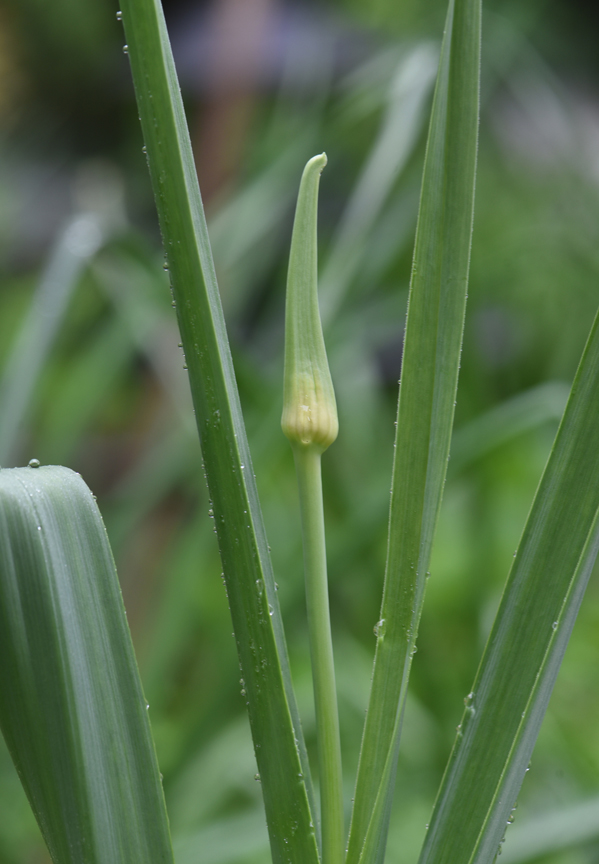
This is the seed head from hardneck garlic called a scape. It needs to be removed so the plant uses its energy to make big bulbs, not seeds. It’s also a great treat in the kitchen.
Some garlic growers also grow softneck varieties, which are sometimes smaller bulbs, but often times store better than the hardneck cultivars.
Pulling a few heads early results in a smaller bulb but one filled with garlic oil.
The final harvest, which is the bulbs themselves, happens in mid-summer when more than 50 percent of the foliage fades to brown.
The bulbs can either be gently pulled from the ground or helped along with a garden fork.
They need to be cured for three weeks by hanging in a warm dry place. They will store longer if the stems are left attached.
Store them in an onion bag in a cool dry place, and many times they will last all winter.
One tip for garlic lovers: If your significant other also eats garlic, you’ll cancel each other out when it comes to the pungent aroma.
It’s only when you interact with the rest of the world that you might raise a stink.
Doug Oster is editor of Everybody Gardens, a website operated by 535Media, LLC. Reach him at 412-965-3278 or doster@535mediallc.com. See other stories, videos, blogs, tips and more at everybodygardens.com.
More from Everybody Gardens
Doug’s favorite garlic recipes.
